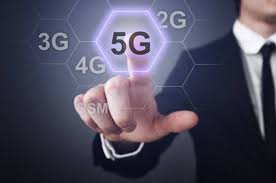Wifi Offloading :
As the name “Offload” indicates to get rid of some one or
unload something from your basket. WiFi Offloading is getting popular now a
days. Almost all the chip-set vendors and the operators implementing WiFi
Offload support.
The solution allows the operator to indicate how the IP
flows are routed through the available access systems and to selectively
offload some traffic (e.g. best effort traffic) to WLAN while using UTRAN or
E-UTRAN for other traffic (e.g. traffic with specific QoS requirements). This
is usually referred to as WLAN offload.
Why Wi-Fi Offload?
As you notice, the evolution of mobile communications from
1G to 4G (going forward 5G) is to accomplish new levels of user experience and
multi-service capacity, especially in Data. Just recollect the days when we
have Nokia and Motorola handsets operating Symbian OS. And compare now the
Smart Phone era. The amount of data being used per subscriber increased
drastically. No surprise that we won’t find a mobile without installing any one
of the e-commerce /social networking /Banking apps. It’s not just mobiles, also
Laptops, Tablets ..etc. Now it’s a challenge for the operators to think of cost
effective solution to satisfy customers as the bandwidth requirements
increasing day by day. This is one of the requirement opting WiFi offloading.
Answer the question, suppose you have broadband at home with
WiFi enabled and mobile data enabled on your mobile. Once you reach home from
office, whether you turn on WiFi or not? Of course the answer would be YES
because WiFi is cheap and faster compared to Mobile Data especially indoor.
Also now a days we keep watching new devices that doesn’t
support Mobile Network but WiFi and the device operator locked .
One more to say in pure technical terms “to achieve required
QoS in a cost effective way”
From Carrier point of view, the investment would be very
less and he always can use un-licensed spectrum and save money. From user point
of view “User Experience” matters.
How WiFi offload reduce cost?
1.
For example you have an iPhone and it’s locked
to one operator. Wifi is turned on and sometimes you notice instead of 4G wifi
being used. Carrier can afford more subscribers and gain more income by
offloading few subscribers from Mobile Data. Operators can have this kind of mechanism
in universities, Railway stations or someplace where mass gathering happens.
Note that the transition from mobile data to wifi should be without user
intervention.
2.
This allows reducing the load on some of the
network elements.
If I am not wrong user won’t get benefited much with this
feature except “User Experience” J.
Disadvantages:
1.
Battery may drain quickly, since the UE keep
searching for available wifi networks when the it is enabled from GUI.
2.
In my view, Offload should be Network
controlled, there should be a measurement event to report the available
networks and decide which is good for the UE based on the UE direction of
travel and other statistics. This is not available at the moment, may add in
future.
We shall look into architecture and the importance of ePDG in Part 2.




